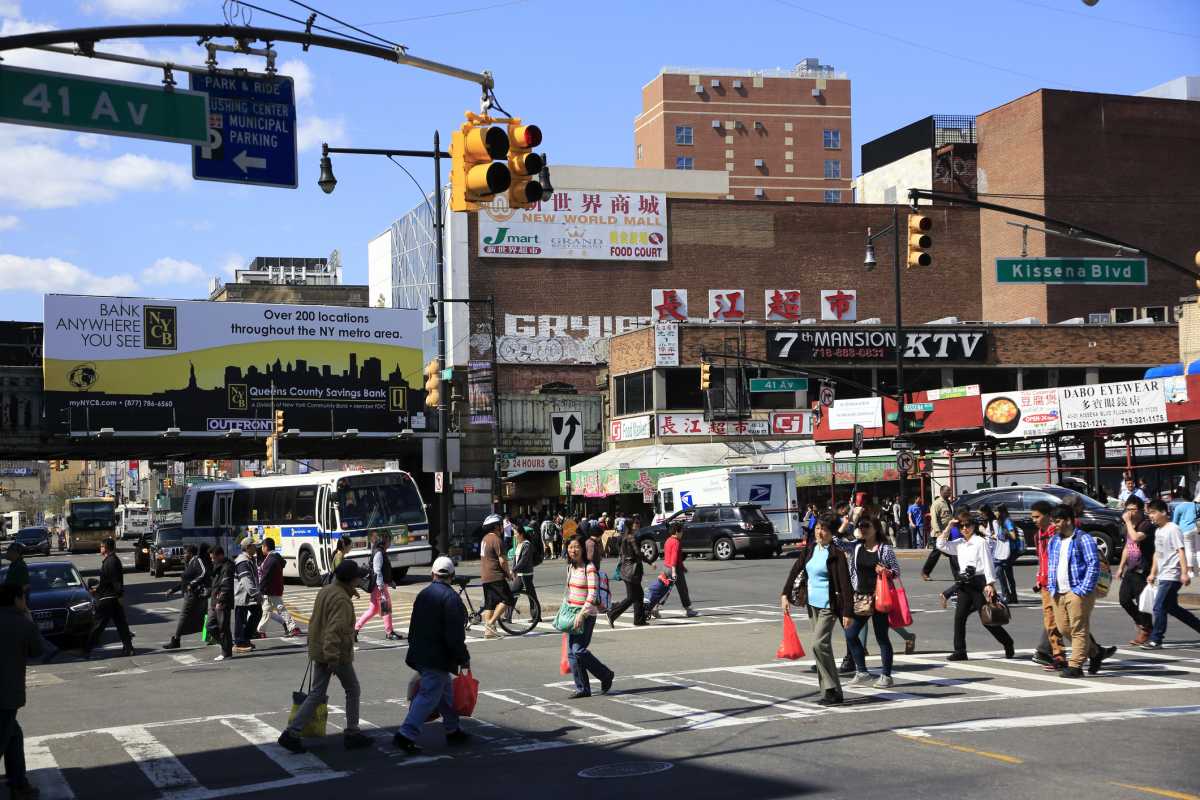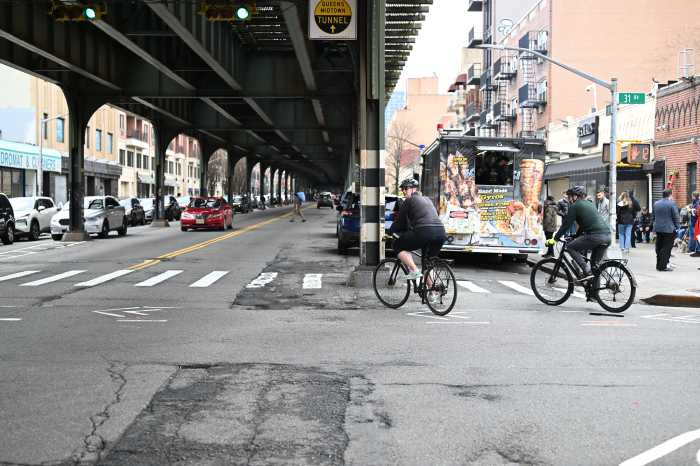Cross with the light, wherever you’d like!
New York City has officially decriminalized jaywalking, giving a legal patina to a practice long adopted by virtually every Big Apple resident.
In Queens, where bustling intersections and diverse neighborhoods make crossing busy streets a daily necessity, the decriminalization of jaywalking is especially impactful. This change could benefit Queens residents who often navigate crowded thoroughfares like Queens Boulevard and Roosevelt Avenue, where jaywalking has long been a matter of practicality rather than defiance.
The City Council passed a bill last month that allows pedestrians to cross the street at any area, not just a crosswalk, and with any signal. However, pedestrians are warned that they do not have the right of way in such circumstances and to exercise caution. The city code had previously banned the behavior.
Jaywalking is so commonplace in New York that it could scarcely be enforced. When it was, more than 90% of tickets, costing up to $250, were issued to Black and Latino New Yorkers, leading lawmakers like Brooklyn Councilmember Mercedes Narcisse, the prime sponsor of the bill, to conclude enforcement was racially biased.
“Let’s be real, every New Yorker jaywalks,” Narcisse said in a statement. “It’s a part of daily life here, and penalizing people for simply moving around the city is outdated, especially when those penalties have unfairly targeted communities of color.”
“Police officers have shared with me that they prefer to focus on true public safety efforts, not issuing tickets for crossing the street,” Narcisse continued. “No one says, ‘I’m relieved they caught that jaywalker.’ By removing these penalties, we allow officers to focus on real community concerns.”
This reform resonates in neighborhoods like Jackson Heights and Astoria, where busy roads and frequent jaywalking enforcement have affected residents, many of whom are from communities of color that have been disproportionately ticketed. With the new law in effect, pedestrians in Queens and across New York can cross streets more freely, although city officials emphasize that safety precautions remain essential.
Mayor Eric Adams did not sign the bill, but he also did not veto it. As a result, on Saturday, it passed a 30-day mark without action and formally entered New York City law.
A spokesperson for Hizzoner did not specifically state why Adams decided to let the bill lapse into law rather than signing it. However, the spokesperson, Liz Garcia, praised the law’s language as still clearly discouraging jaywalking and ensuring individuals could still face civil liability if their jaywalking causes an accident.
“All road users are safer when everyone follows traffic rules,” said Garcia. “We continue to encourage pedestrians to take advantage of safety mechanisms in place — such as daylighting, pedestrian islands, and leading pedestrian intervals — by crossing in a crosswalk with the walk signal.”
The bill also includes a provision for public education campaigns about “the rights and responsibilities” of both pedestrians and drivers of automobiles, bikes, and other vehicles.
The law against jaywalking has been in effect in New York since 1958. Before that, pedestrians ruled the road, but the auto industry began pushing for criminalization as more Americans became car owners.
A “jay” is an anachronistic term that essentially means “rube.”
New York is not the first city to decriminalize jaywalking. Denver, Kansas City, and the state of California have also done so.




































